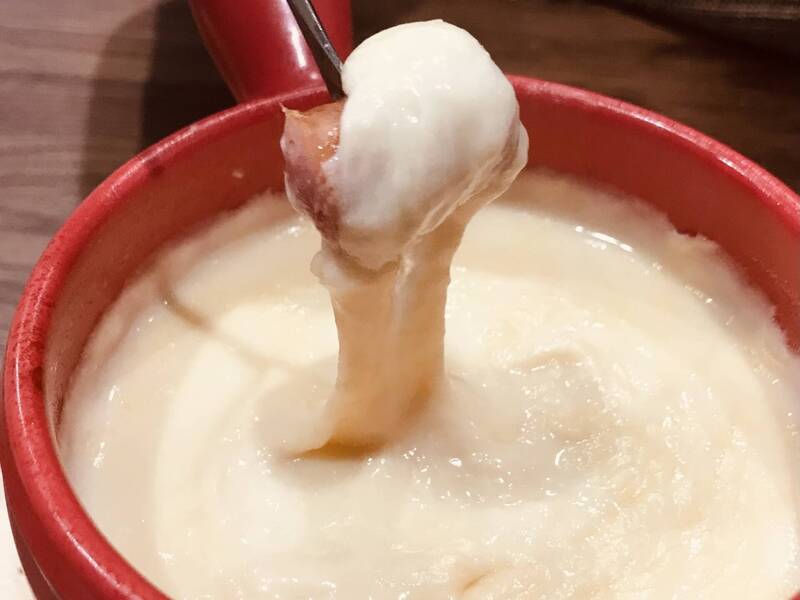The heat of the spicy pot and the cheese milk pot is nearly 120 times that of the soup base of the vegetable pot; the picture is a schematic diagram.
(The picture is taken from photoAC)
[Health Channel/Comprehensive Report] Eat hot pot in winter, but worry about the burden on the body caused by high calories; in this regard, nutritionist Gao Minmin posted a post on the Facebook fan page "Gao Minmin Nutritionist" to share small hot pot soup base, vegetable and meat dishes, staple foods, Sauce and other heat.
For example, the soup base of spicy pot and cheese milk pot has nearly 120 times the calories of the vegetable pot; the soup base of sauerkraut and white meat pot is low in calories, but the sodium content is very high.
Small hot pot heat
●Soup base
(per 1000ml, about the amount of soup base in a personal pot)
Please read on...
1. Cheese milk pot: 1650 calories.
2. Spicy pot: 1415 calories.
3. Stone hot pot: 580 calories.
4. Pickled cabbage and white meat pot: 500 calories.
5. Tofu pot: 440 calories.
6. Smelly pot: 440 calories.
7. Medicinal pot: 330 calories.
8. Seafood pot: 130 calories.
9. Kelp pot: 30 calories.
Gao Minmin mentioned that the heat of spicy pot and cheese milk pot is nearly 120 times that of vegetable pot soup base.
Usually, cream is added to the milk pot to make the taste better, which means that the ingredients soaked in the full oil pot will absorb the heat of the soup base.
In addition to the calories, the sodium content of the soup base is also one of the pitfalls. For example, the sauerkraut and white meat pot has low calories, but the sodium content is very high. After all, the sauerkraut is pickled with salt.
Gao Minmin added that the Ministry of Health and Welfare recommends that the total daily sodium intake should not exceed 2400 mg (about 6g of salt), but basically drinking hot soup may exceed the standard, so it is recommended to choose kombu pot and seafood pot. Multiple prototypes are a better choice.
●Dishes
1. Hot pot ingredients (3-4 capsules): 100 calories.
2. Vegetables (2 servings): 100 calories.
3. Bean curd (slice): 95 calories.
4. Egg (piece): 75 calories.
5. Frozen tofu (80 grams): 75 calories.
6. Corn (2 pieces): 72 calories.
7. Winter noodles (half a handful): 70 calories.
8. Taro (block): 35 calories.
9. Pumpkin (block): 35 calories.
10. Mushrooms (1 serving): 35 calories.
●Meat slices (about 8-10 slices per plate, 160g)
1. Beef pork belly: 518 calories.
2. Plum-blossom pig: 470 calories.
3. Sea bream fillet: 206 calories.
4. Chicken tenderloin: 174 calories.
●staple food
1. White rice (bowl): 280 calories.
2. Prince noodles (50g/pack): 249 calories.
3. Steamed noodles (65g/piece): 217 calories.
4. Winter noodles (40g/handle): 140 calories.
5. Udon noodles (180g/serving): 120 calories.
Gao Minmin said that if you don’t want to gain weight, you can replace the staple food with udon noodles and winter noodles. Although winter noodles have the lowest calories, they are usually cooked in oil soup and mixed with sand tea sauce, which will increase the calories invisibly.
It is recommended not to add sauce to the noodles, so as to reduce excess calories and fat.
●Sauce (each 30g, about 1 small sauce dish is filled)
1. Sand tea: 219 calories.
2. Bean paste: 54 calories.
3. Soy sauce: 27 calories.
4. Chili sauce: 25.5 calories.
5. Black vinegar: 10.5 calories.
●Drinks: (about 200ml per cup)
1. Coke: 102 calories.
2. Apple juice: 94 calories.
3. Soda: 84 calories.
4. Calpis: 58 calories.
5. Sugar-free tea: 0 calories.
Tailor-made smart supplements
Gao Minmin suggested that the average person should mainly eat green vegetables, supplemented by meat, eat more original ingredients, and increase the intake of mushrooms and algae to maintain a balanced nutrition.
It is recommended that hypertensive patients reduce the amount of alcohol and sauces used in cooking to avoid high blood pressure; diabetic patients should mainly eat less oil and high-fiber ingredients, such as pumpkin, taro, corn, yam and other staple foods, pay attention to the intake, so as not to Blood sugar is too high; kidney friends should pay attention to the high potassium content in soup and meat protein; gout patients should reduce soup, pay attention to the amount of meat and drink more water.
In addition, she also reminded that the above content will vary according to the practice of each hot pot restaurant, and there will be differences in calories.
Nutritionist Gao Minmin.
(Provided by Gao Minmin)
☆Health news will never be missed, click like to follow the fan page.
☆For more important medical news, please go to Liberty Health.com.
keywords
hot pot
heat
hot pot sauce
spicy pot
healthy diet
related news
